MANUAL OF OPERATIONS
AG1 - Night Vision Device
AG2 - Optics covers
AG3 - Hunter-killer tracking system
AG4 - Hydropneumatic suspension (Trim)
AG5 - M2HB .50 MG (VTOL+Trim, FireGuns)
AG6 - Type 74 7.62x51mm MG (VTOL, FireGuns)
AG7 - None
AG8 - Engine
Pitch+Roll to drive.
Yaw for turret traverse, trim for gun elevation.
Throttle to change ride height.
Weapons:
APFSDS, 120mm, JM93A1.
HEATFS-MP, 120mm, JM15A1 (proximity fuze).
ATGM, Type 95 MAT-Kai.
Smoke dischargers.
40mm camera mortar.
CREDITS
- SnoWFLakE0s, help with FT, along with his FN MAG.
- Exosuit, help with paneling on the turret.
- Friends and SPMC for testing and feedback.
The Type 92 tank (Kyu-ni-shiki-sensha) is a main battle tank (MBT) of the Japan Ground Self-Defense Force (JGSDF). It was designed and built by Mitsubishi Heavy Industries as a replacement for all deployed Type 61 and Type 74 tanks, and entered service in 1992. It is to be superseded by the Type 11 tank. Conceived for modern armored ground warfare and now one of the lightest main battle tanks in service, at nearly 52 short tons (48 metric tons), it introduced several innovative features, including a multifuel turbine engine, sophisticated depleted uranium composite armor, a computer fire control system, separate ammunition storage in a blow-out compartment, and NBC protection for crew safety.
History
Development
After the adoption of the Type 74, the Japanese High Command was already looking for a superior, completely indigenous tank design to defeat the Soviet T-72. As a result, development of a prototype, the TK-X MBT began between 1976 and 1982, with the first prototype undergoing testing in 1981. Unfortunately, in 1982, the program was cancelled due to the unsatisfactory performance of the TK-X prototype. In 1983, High Command started another program, dubbed the MBT-X. Joint development was performed by Mitsubishi Heavy Industries and TRDI (Japan Defense Agency's Technology Research and Development Institute). Major subcontractors included Japan Steel Works, Daikin Industries, Mitsubishi Electric, Fujitsu and NEC.
Two prototypes of the MBT-X, SG-1 and SG-2, were completed in 1986, both armed with a license produced Rheinmetall 120 mm L/44 gun (produced by Japan Steel Works Limited firing Japanese ammunition). Testing and design modifications such as improvements to the turret ceramic composite armor continued until 1988. Both of these prototypes still used an indigenous diesel engine.
In 1989, Mitsubishi Heavy Industries tested a prototype gas turbine engine on SG-2, and the performance proved satisfactory. Subsequent prototypes used improved versions of the prototype gas turbine engine.
Design
Protection
Similar to most other main battle tanks, the Type 92 features composite armor only on the frontal aspect of the hull. However, the turret features composite armoring across both the front and the sides. In addition, the side skirts of the frontal half of the hull are also made of composite, providing superior ballistic protection against chemical energy munitions such as HEAT rounds. The composition of the Type 92's composite armor consists of sandwiched plates of non-explosive reactive armor (NERA) between conventional steel plates. The NERA plates feature elasticity, allowing them to flex and distort upon perforation, disrupting the penetrating jets of shaped charges and providing more material and space for a kinetic round to pass through, thus providing increased protection compared to conventional steel armor of similar weight.
Armor protection was improved by implementing a new special armor incorporating depleted uranium and other undisclosed materials and layouts. This was introduced into the Type 92 production starting August 1995. This new armor increased effective armor particularly against kinetic energy rounds but at the expense of adding considerable weight to the tank, as depleted uranium is 1.7 times more dense than lead. This variant was designated as the Type 92 Kai. The Type 92 may be fitted with the JM98 Explosive Reactive Armor on the side skirts and slat armor over the rear of the tank and rear fuel cells to protect against ATGMs. Protection against spalling is provided by a kevlar liner.
Countermeasures
The turret is fitted with two four-barreled smoke grenade launchers, with one on each side. When deployed, the grenades airburst, creating a thick smoke that blocks both visual and thermal imaging. The engine is also equipped with a smoke generator that is triggered by the driver. When activated, fuel is sprayed into the hot turbine exhaust, creating the thick smoke. It also has a 40mm mortar mounted on the turret to lay smokes, and to deploy a small reconnaissance drone.
Armaments
The main armament of the Type 92 and its' variants is the Japan Steel Works Type 91 120mm L/44 gun/launcher (earlier production models used the Rheinmetall 120mm L/44). It fires a variety of rounds. The primary APFSDS round of the Type 92 is the JM93. With the depleted uranium variant; the JM93A1 saw widespread service during the Sino-Japanese war. As of 2011, the Type 92 can utilize the Type 10 APFSDS round designed for the Type 11 MBT. The Type 92 also fires high-explosive anti-tank rounds, such as the JM15, the latest version of which (JM15A1) incorporates a sophisticated multi-mode electronic sensing fuse and more fragmentation that allows it to be used effectively against armored vehicles, personnel, and low-flying aircraft. In addition to these, the 120mm gun can fire the Type 95 MAT-Kai anti-tank guided missile. The gun is armed and loaded by a mechanical bustle autoloader (conveyor-belt type) developed by Mitsubishi of Japan. The Type 92 achieves manpower savings by reducing the crew to three. Its ability to operate without a loader also allows the use of a smaller turret. The autoloader can reload in around two seconds, and the practical auto-loading and firing cycle for one target is around 4–6 seconds.
The Type 92 has three machine guns;
1. A .50 cal. (12.7 mm) M2HB machine gun in front of the commander's hatch.
2. A 7.62 mm Type 74 machine gun in front of the gunner's hatch.
3. A 7.62mm Type 74 machine gun mounted coaxially to the left of the main gun.
The Type 92 is equipped with a ballistic fire-control computer that uses user and system-supplied data from a variety of sources to compute, display, and incorporate the three components of a ballistic solution—lead angle, ammunition type, and range to the target—to accurately fire the main gun. These three components are determined using a laser rangefinder, crosswind sensor, a pendulum static cant sensor, data concerning performance and flight characteristics of each specific type of round, tank-specific boresight alignment data, ammunition temperature, air temperature, barometric pressure, a muzzle reference system (MRS) that determines and compensates for barrel drop at the muzzle due to gravitational pull and barrel heating due to firing or sunlight, and target speed determined by tracking rate tachometers in the Gunner's or Commander's Controls Handles. All of these factors are computed into a ballistic solution and updated 30 times per second. The updated solution is displayed in the Gunner's or Tank Commander's field of view in the form of a reticle in both day and Thermal modes. The ballistic computer manipulates the turret and a complex arrangement of mirrors so that all one has to do is keep the reticle on the target and fire to achieve a hit. Proper lead and gun tube elevation are applied to the turret by the computer, greatly simplifying the job of the gunner.
The fire-control system uses this data to compute a firing solution for the gunner. The ballistic solution generated ensures a hit percentage greater than 95 percent at nominal ranges. Either the commander or gunner can fire the main gun. Additionally, the Commander's Independent Thermal Viewer (CITV) can be used to locate targets and pass them on for the gunner to engage while the commander scans for new targets. In the event of a malfunction or damage to the primary sight system, the main and coaxial weapons can be manually aimed using a telescopic scope boresighted to the main gun known as the Gunner's Auxiliary Sight (GAS). Turret traverse and main gun elevation can be accomplished with manual handles and cranks in the event of a Fire Control System or Hydraulic System failure.
Mobility
The Type 92's powertrain consists of a Mitsubishi NEXM1 multifuel gas turbine capable of 1,500 shaft horsepower (1,100 kW) at 3,000 rpm and 3,950 lb·ft (5,360 N·m) at 1,000 rpm, and a twelve-speed (six forward, four reverse) Mitsubishi MT1700 automatic transmission, giving it a governed top speed of 43 mph (70 km/h) on paved roads, and 30 mph (48 km/h) cross-country. The hydropneumatic suspension units are mounted on the front and rear pair of road wheels, which can be adjusted on-the-fly to deal with uneven terrain, a requirement on Japan's rough, mountainous terrain.
Variants
· Type 92 first mod
First production model of the Type 92, used the Rheinmetall 120mm.
· Type 92 mod B
Improved CITV system, as well as first generation depleted uranium armor.
· Type 92 mod C
Second generation depleted uranium armor, as well as an improved Japan Steel Works 120mm.
· Type 92 mod D/Kai
Latest variant, features third generation depleted uranium armor, JM98 ERA is mounted on the side skirts. Power pack is upgraded with a license produced General Electric LV100-5 gas turbine engine.
Type 92 mod D/Kai
Type: Main Battle Tank
Place of origin: Japan
Manufacturer: Mitsubishi Heavy Industries
Produced: 1991-2010
In service: 1992-Present
No. built: 436
Mass: 49 tonnes
Crew: 3
Armor: Modular composite/depleted uranium armor
Main armament: Japan Steel Works Type 91 Gun/Launcher (91?120mm?/?????), capable of firing JM93 depleted uranium APFSDS, JM15 HEATFS-MP, Type 95 MAT-Kai ATGMs, autoloaded (41 rounds)
Secondary armament:
M2HB 12.7mm machine gun
Type 74 7.62 mm machine gun (x2)
Engine: License produced General Electric/Honeywell LV100-5 gas turbine engine
Transmission: Mitsubishi MT1700 automatic transmission (6 forward gears, 4 reverse gears ) Suspension: Hybrid hydropneumatic & torsion bar suspension
Specifications
Spotlights
- This craft has been featured
- Spikerya 4.5 years ago
- exosuit 4.5 years ago
- DeathStalker627 4.5 years ago
- BaconAircraft 4.5 years ago
- Fumo 4.5 years ago
- Baldeagle086 4.5 years ago
- AverroesIndustries 4.5 years ago
- asteroidbook345 4.5 years ago
- RussianAce 4.5 years ago
- Dllama4 4.5 years ago
- shipster 4.5 years ago
- Vercynis 4.5 years ago
- CillitBangGang 4.5 years ago
- AWESOMENESS360 4.5 years ago
- Sparky6004 4.5 years ago
- Noname918181818181818181 4.5 years ago
- soldier289 4.5 years ago
- AnIndonesianGuy 4.5 years ago
- MarbleXLazuli 4.3 years ago
- CookingWithCinderBlocks 4.5 years ago
- LUPIN 1.6 years ago
General Characteristics
- Created On Windows
- Wingspan 12.6ft (3.9m)
- Length 31.6ft (9.6m)
- Height 17.2ft (5.2m)
- Empty Weight 64,780lbs (29,383kg)
- Loaded Weight 101,598lbs (46,084kg)
Performance
- Power/Weight Ratio 1.36
- Wing Loading 75,510.8lbs/ft2 (368,676.0kg/m2)
- Wing Area 1.3ft2 (0.1m2)
- Drag Points 9313
Parts
- Number of Parts 1585
- Control Surfaces 0
- Performance Cost 5,692
Required Mods
-
Tracks 2
by MOPCKOE_DNISHE
Version 0.81 (9/8/2019 1:50:14 PM)
View Mod Page

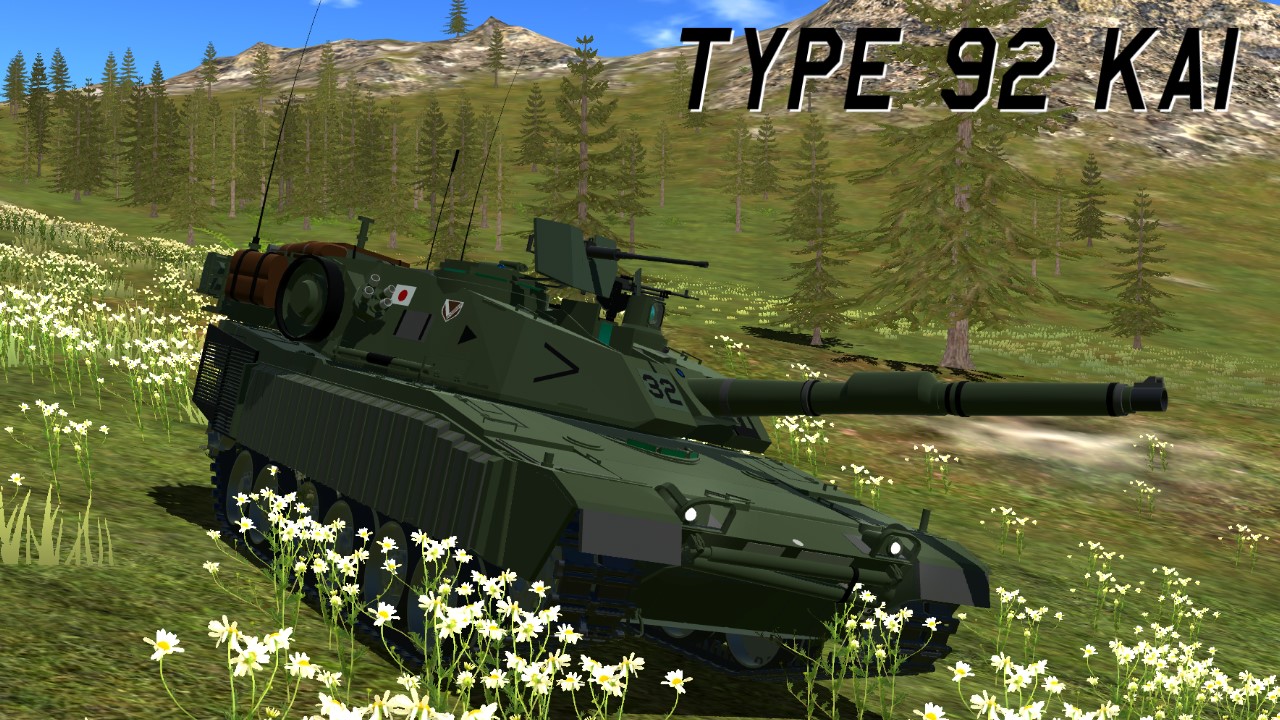
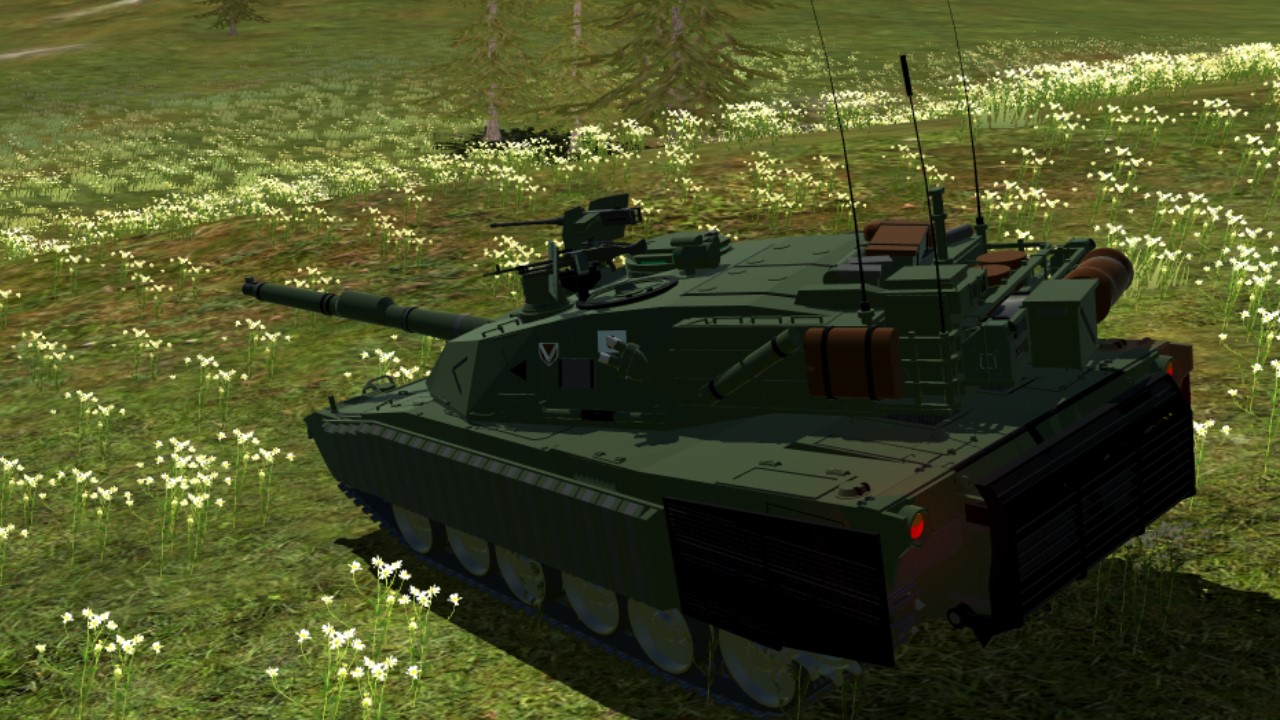
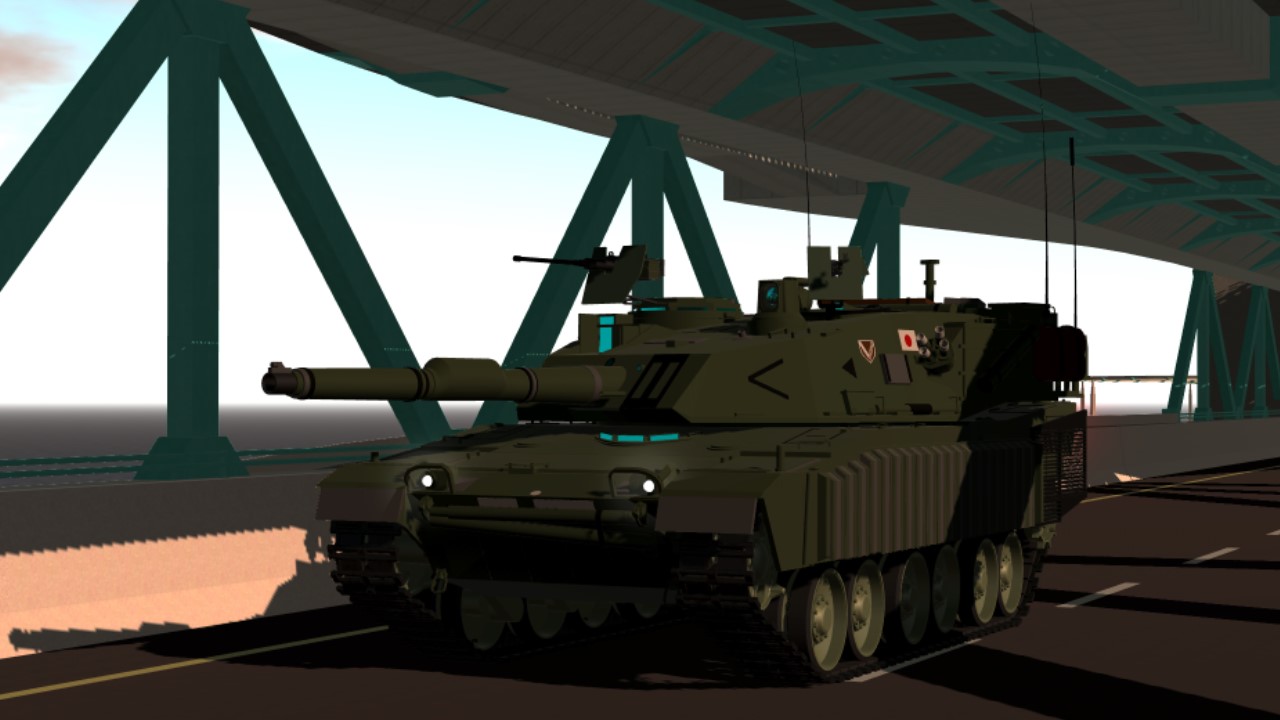
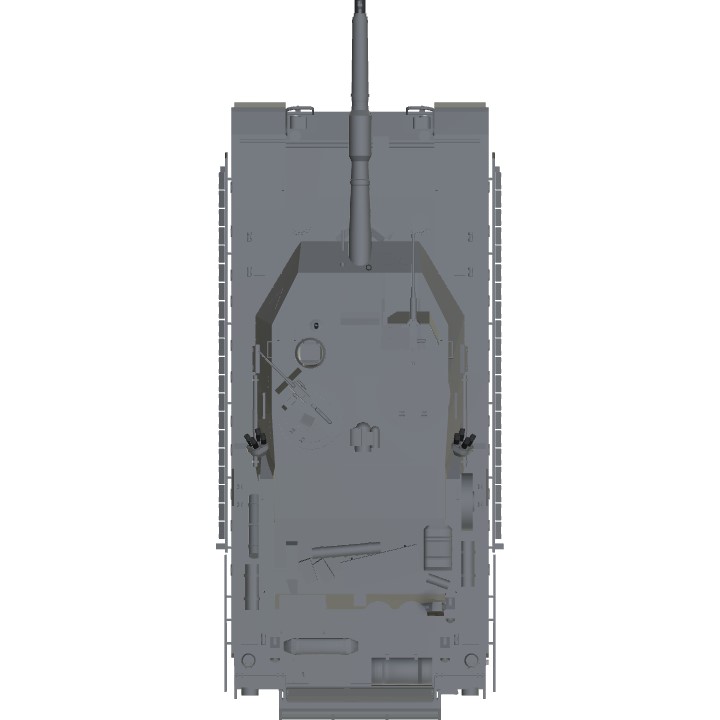
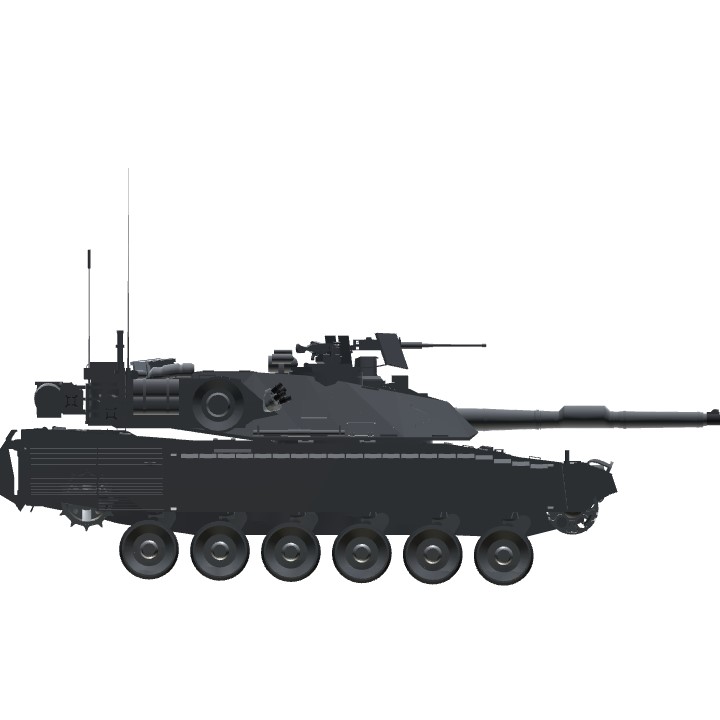

japan wasn't in the cold war nice build tho
Someone on pc, can you remove the tracks and upload it? You would help mobile players.
holy shit
this is a cool tonk
how did you get the turret to work?
Tonk go boom
what? it need a mod to download
im not surpot
70th
(Sorry 69...)
Nippon tank! And also congrats for getting this thing featured, You deserved it
congrats on feature
He’s not the TAM, he’s the TAM’s Japanese cousin! @BaconAircraft
It’s funny how quick I am to upvote tanks, I went to upvote this and it seems I’ve already upvoted it
Your Pfp makes me happy =D
@yoshicraze My CHAIRMAN WILL SEE YOU SHORTLY
This bad module version 1.9 doesn't work
@AverroesIndustries meow
@exosuit 130 too fat
Mfw it's not the 130mm like the initial design
great description of the tank!
6/4/1989
noice
6-4
6-4-89
@Shirakami56709 woah don't call it fat, it may be sensitive